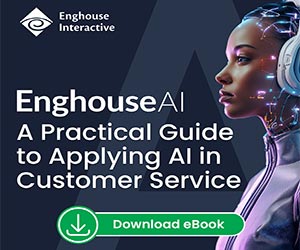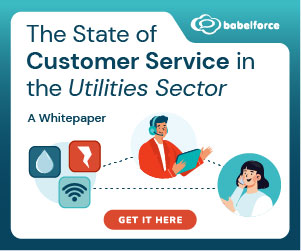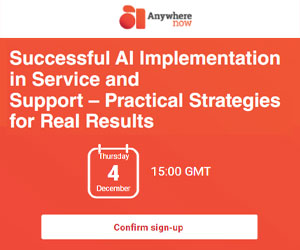CallMiner examines which obstacles agents encounter and how AI solutions help them at each stage of their work while highlighting what organizations should think about when deploying AI solutions effectively.
Call centres today face a complex challenge: Service teams must fulfill escalating customer needs as they manage high agent turnover rates, transition through multiple communication channels, and face increasing demands for operational efficiency improvements. Traditional tools and processes aren’t enough. That’s where AI comes in.
Through AI-powered technologies, agents receive immediate support while manual tasks decrease and essential information surfaces at the right moment-without interrupting conversation flow. When deployed strategically, AI becomes more than a tool; it’s a force multiplier for agent performance.
Challenges in Traditional Agent Performance
Even the most skilled agents struggle when the tools and systems around them fall short. Traditional call centre environments often create more friction than flow, making it difficult for agents to deliver consistent, high-quality customer experiences. Here’s a look at the core challenges that hold teams back.
Inconsistent Access to Knowledge and Customer History
Agents often spend too much valuable time searching through fragmented systems because they don’t have direct access to customer histories or knowledge base content.
They become frustrated while interactions grow longer, resulting in poorer customer experiences and decreased first-call resolution (FCR) rates.
High Cognitive Load and Manual Data Entry
Agents are forced to multi-task under pressure, juggling between tools, typing notes, and trying to listen actively. The mental strain adds up. Manual note-taking results in documentation mistakes or omissions that create gaps in post-call data analysis and subsequent support activities.
Long Handling Times and Inconsistent Resolution Quality
When agents don’t have access to the necessary insights during customer interactions, calls drag on. The absence of guided workflows and real-time prompts results in inconsistent resolutions that depend on agent experience and memory instead of data-driven support. Unpredictability leads to operational inefficiencies while increasing repeat contact rates.
Agent Burnout and Turnover
Agent burnout develops due to mental exhaustion, insufficient support resources, and continuous emotional stress from handling consecutive customer problems.
A lack of support and feelings of ineffectiveness among agents cause turnover rates to increase. The cost? Lost expertise, constant onboarding cycles, and diminished customer satisfaction.
Key AI Tools That Support Agent Effectiveness
AI influences many aspects of modern call centre operations, including everything from how calls are handled to how agents are supported, trained, and evaluated.
Platforms deliver real-time guidance and personalized coaching, as well as instant feedback to help agents improve their immediate performance and develop their skills over time. Let’s explore the key AI tools that support agent effectiveness.
Leveraging AI For Real-Time Agent Assistance
Real-Time Guidance
When agents are in the middle of a customer interaction, delayed support is ineffective. Supervisors use real-time AI tools to track active discussions, identify potential risks, and intervene when necessary. Agents receive prompt assistance, which enables them to solve customer issues faster and avoid increasing the severity of problems.
Contextual Assistance and Automated Suggestions
AI processes the call in real-time by listening to spoken words to identify intent and surface relevant information instantly. Agents have immediate access to policy clarifications and next-best actions, along with escalation protocols whenever these resources are required.
Sentiment Analysis and Dynamic Scripting
AI systems monitor customer sentiment continuously by evaluating their tone, pacing, and language patterns.
Scripts have the ability to dynamically change and provide phrase recommendations that correlate with the customer’s emotional state and their expressed intentions. This enables agents to maintain conversation flow and sustain productive interactions.
Enhancing Training and Onboarding With AI
Accelerated Learning Curves
AI-driven coaching enables new agents to master their roles more quickly by delivering immediate feedback while they handle live calls.
Agents receive immediate corrections during calls, which helps them learn best practices faster rather than waiting for post-call reviews.
Continuous Improvement
AI examines call data trends to detect areas where training and coaching interventions are required. Supervisors gain insight into which agents are struggling, along with contextual data, which supports precise training based on actual performance metrics.
Ensuring Compliance and Quality Assurance
Proactive Compliance Monitoring
Instead of performing after-the-fact reviews, AI systems provide real-time monitoring of calls by identifying when agents fail to use required language or deviate from sanctioned scripts. This system enforces compliance during live interactions, which helps to minimize regulatory risks.
Automated Quality Monitoring
AI evaluates interactions against quality benchmarks at scale, eliminating the need for supervisors to manually review every call. This allows QA teams to focus on coaching and improvement, not just scoring.
Post-Interaction Analysis and Feedback
Comprehensive Interaction Reviews
Post-call analytics offer a detailed evaluation of each interaction by identifying successful parts and areas needing improvement. Teams gain complete visibility into agent performance metrics alongside customer satisfaction scores.
Feedback Loops For Continuous Improvement
AI doesn’t just measure – it guides improvement. AI tools suggest distinct actionable steps agents should implement based on trends and outcomes. Continuous insights allow teams to refine their methods and elevate overall performance levels.
Implementation Considerations
Successful AI implementation depends on smart execution, seamless integration, team adoption, and clearly defined success metrics. Here’s what to keep in mind to avoid false starts and ensure long-term impact.
System Integration
AI tools achieve their full potential only when they operate within fully integrated systems. Without clean integration into your CRM or telephony stack, AI systems will cause delays and frustration while delivering limited value.
Seamless integration requires real-time data flow to avoid any delays or disconnections. Agents lose efficiency and fail to adopt new systems when friction arises within the integration process.
Agent Adoption and Training
The highest quality AI systems become ineffective when agents choose not to engage with them. Teams should gain insight into how the system provides assistance rather than simply learning operational functions.
Effective training programs must establish trust by demonstrating how AI systems enhance agent workflows and reduce cognitive burden while assisting them to achieve success. Without buy-in, automation becomes noise.
Data Privacy and Transparency
Live conversation monitoring raises questions. What’s being tracked? Who sees it? Why? Organizations must be upfront.
The ethical use of AI systems requires mandatory strong encryption protocols alongside clear consent rules and policies. Open communication establishes trust between agents and customers.
Measuring ROI
Without clear metrics, success is just a guess. Track key performance indicators—handle time, resolution rate, compliance adherence, CSAT, and gather agent feedback regularly. Real ROI comes when performance improves and your team embraces AI.
Frequently Asked Questions
What Does Agent Effectiveness Mean in a Contact Centre?
Agent effectiveness refers to an agent’s ability to resolve customer issues efficiently, accurately, and empathetically – often measured by metrics like First Contact Resolution (FCR), Average Handle Time (AHT), and Customer Satisfaction (CSAT).
How Does AI Improve Agent Performance?
AI helps agents by automating repetitive tasks, providing real-time guidance, surfacing relevant knowledge instantly, and analyzing customer sentiment, allowing them to focus on high-value interactions.
Do AI Tools Replace Human Agents?
No. AI is designed to augment human agents, not replace them, by reducing their workload, improving decision-making, and enhancing the quality of each customer interaction.
How Can We Measure the ROI of AI Tools in the Contact Centre?
Track improvements in metrics like handle time, call deflection rate, resolution speed, and agent productivity. Some AI platforms also offer dashboards with built-in ROI tracking.
This blog post has been re-published by kind permission of CallMiner – View the Original Article
For more information about CallMiner - visit the CallMiner Website
Call Centre Helper is not responsible for the content of these guest blog posts. The opinions expressed in this article are those of the author, and do not necessarily reflect those of Call Centre Helper.
Author: CallMiner
Reviewed by: Megan Jones
Published On: 17th Jul 2025
Read more about - Guest Blogs, CallMiner






 CallMiner is the leading cloud-based customer interaction analytics solution for extracting business intelligence and improving agent performance across all contact channels.
CallMiner is the leading cloud-based customer interaction analytics solution for extracting business intelligence and improving agent performance across all contact channels. 

































